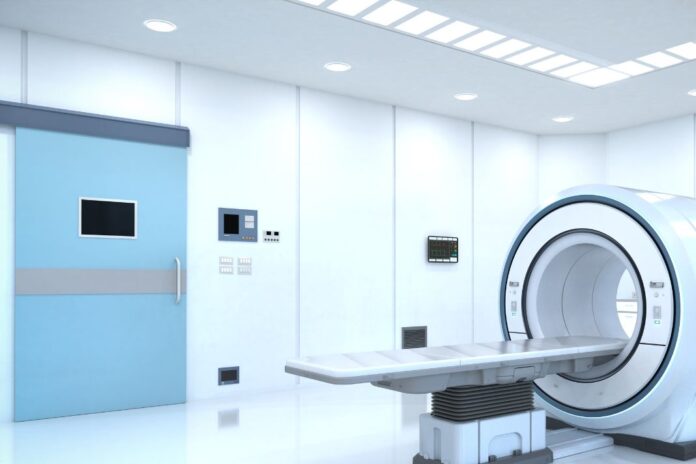Radiation is a powerful tool in the world of medical diagnostics. It allows healthcare professionals to see inside the human body, aiding in the early detection and treatment of diseases. However, with great power comes great responsibility. Ensuring the safety of both patients and healthcare workers is paramount. In this article, we delve into the critical role of radiation protection equipment in Indian diagnostic centers.
1. The Growing Need for Diagnostic Radiology: In recent years, the demand for diagnostic radiology services in India has surged. As the healthcare sector continues to expand, so does the use of radiation-emitting equipment like X-ray machines, CT scanners, and fluoroscopy devices. This growth emphasizes the necessity for robust radiation protection measures.
2. Understanding Radiation Hazards: Radiation, while indispensable in diagnostics, poses potential health risks. Prolonged exposure or improper shielding can lead to adverse effects. This makes radiation protection equipment indispensable for diagnostic centers. Common radiation protection equipment includes lead aprons, thyroid collars, lead glasses, and lead-lined walls.
3. Compliance with Regulatory Standards: To maintain the highest levels of safety, Indian diagnostic centers must comply with the Atomic Energy Regulatory Board (AERB) guidelines and standards. Failing to meet these regulations can result in penalties and, more importantly, compromised safety for patients and healthcare professionals.
4. Types of Radiation Protection Equipment:
- Lead Aprons: These aprons, lined with lead or lead-equivalent material, provide a barrier against harmful radiation during diagnostic procedures.
- Thyroid Collars: Designed to shield the thyroid gland, these collars are essential for reducing radiation exposure in the neck area.
- Lead Glasses: Protecting the eyes from scattered radiation is crucial. Lead glasses effectively shield the eyes while maintaining visibility.
- Lead-Lined Walls: Diagnostic rooms often have lead-lined walls to prevent radiation from escaping, ensuring safety outside the room.
5. Customized Solutions: Each diagnostic center may have unique needs, depending on the types of procedures performed. Therefore, it’s essential to work with radiation protection equipment suppliers who can provide customized solutions tailored to the specific requirements of the center.
6. Cost-Benefit Analysis: While investing in radiation protection equipment may seem expensive, it’s essential to view it as an investment in long-term safety. A thorough cost-benefit analysis will reveal that the potential risks and liabilities far outweigh the initial expenses.
7. Training and Education: Equipping healthcare workers with proper knowledge and training in radiation safety is as important as having the equipment itself. Diagnostic centers should prioritize ongoing education to ensure safe practices.
8. Conclusion: In the rapidly evolving landscape of Indian healthcare, diagnostic radiology remains an indispensable tool. However, the responsible use of radiation is crucial. Proper radiation protection equipment, compliance with regulations, and a commitment to safety are essential for the continued growth of diagnostic centers while safeguarding the well-being of all involved.
Incorporating these insights into radiation protection equipment can help diagnostic centers in India maintain their commitment to patient care, safety, and regulatory compliance.
Radiation, while indispensable in diagnostics, poses potential health risks. Prolonged exposure or improper shielding can lead to adverse effects. This makes radiation protection equipment indispensable for diagnostic centers. Common radiation protection equipment includes lead aprons, thyroid collars, lead glasses, and lead-lined walls.
3. Compliance with Regulatory Standards: To maintain the highest levels of safety, Indian diagnostic centers must comply with the Atomic Energy Regulatory Board (AERB) guidelines and standards. Failing to meet these regulations can result in penalties and, more importantly, compromised safety for patients and healthcare professionals.
4. Types of Radiation Protection Equipment:
- Lead Aprons: These aprons, lined with lead or lead-equivalent material, provide a barrier against harmful radiation during diagnostic procedures.
- Thyroid Collars: Designed to shield the thyroid gland, these collars are essential for reducing radiation exposure in the neck area.
- Lead Glasses: Protecting the eyes from scattered radiation is crucial. Lead glasses effectively shield the eyes while maintaining visibility.
- Lead-Lined Walls: Diagnostic rooms often have lead-lined walls to prevent radiation from escaping, ensuring safety outside the room.
5. Customized Solutions: Each diagnostic center may have unique needs, depending on the types of procedures performed. Therefore, it’s essential to work with radiation protection equipment suppliers who can provide customized solutions tailored to the specific requirements of the center.
6. Cost-Benefit Analysis: While investing in radiation protection equipment may seem expensive, it’s essential to view it as an investment in long-term safety. A thorough cost-benefit analysis will reveal that the potential risks and liabilities far outweigh the initial expenses.
7. Training and Education: Equipping healthcare workers with proper knowledge and training in radiation safety is as important as having the equipment itself. Diagnostic centers should prioritize ongoing education to ensure safe practices.
8. Conclusion: In the rapidly evolving landscape of Indian healthcare, diagnostic radiology remains an indispensable tool. However, the responsible use of radiation is crucial. Proper radiation protection equipment, compliance with regulations, and a commitment to safety are essential for the continued growth of diagnostic centers while safeguarding the well-being of all involved.
Incorporating these insights into radiation protection equipment can help diagnostic centers in India maintain their commitment to patient care, safety, and regulatory compliance.






